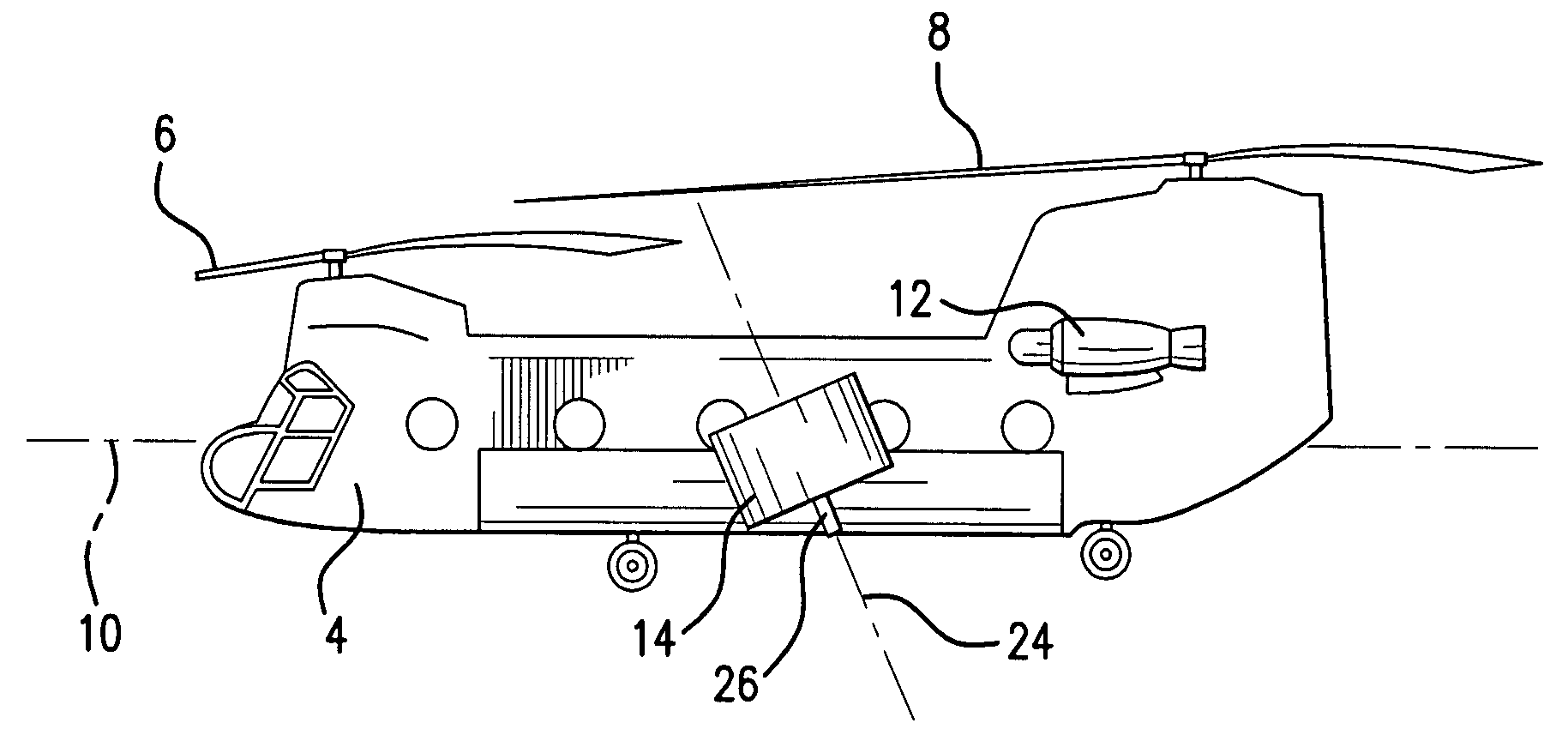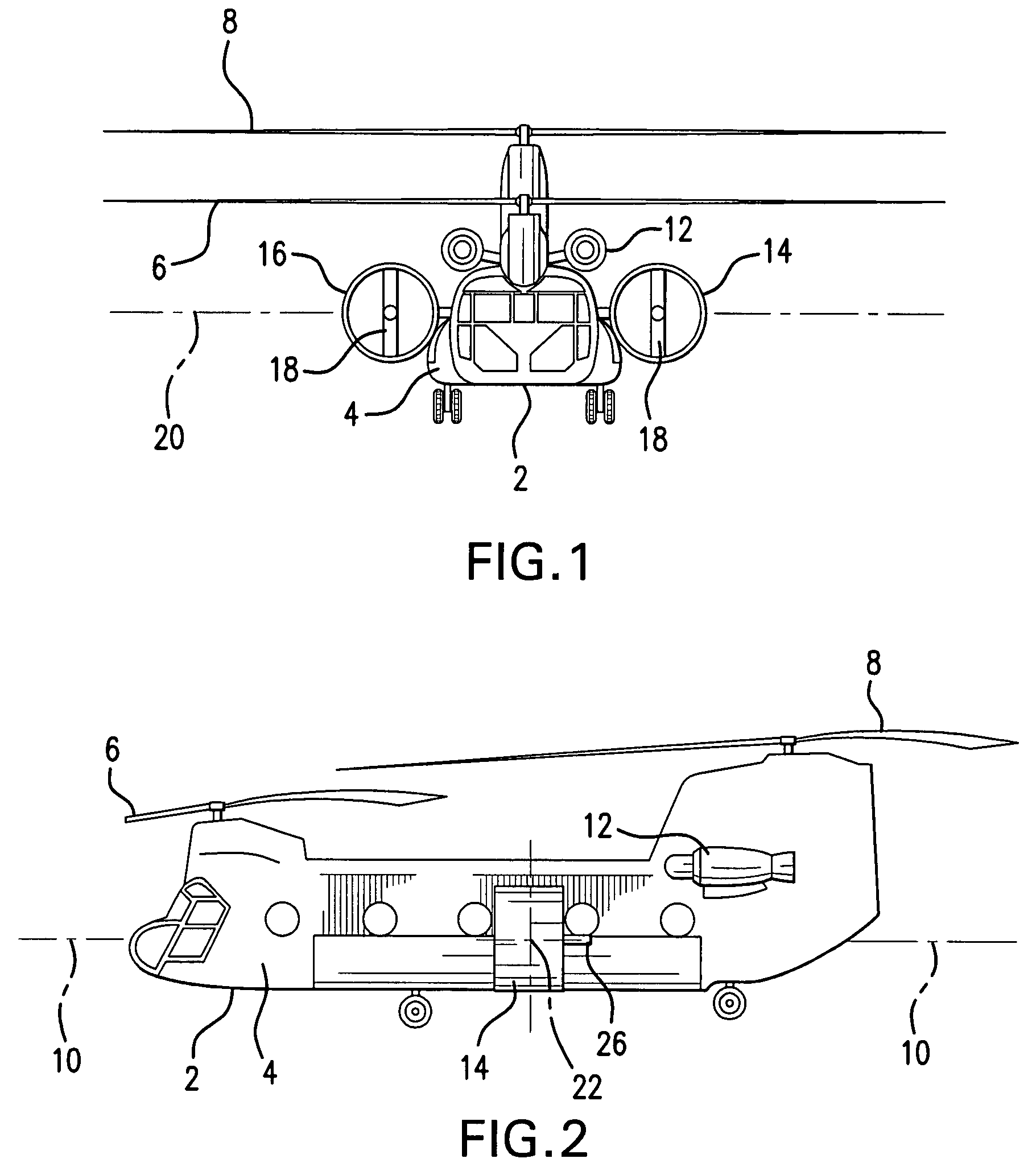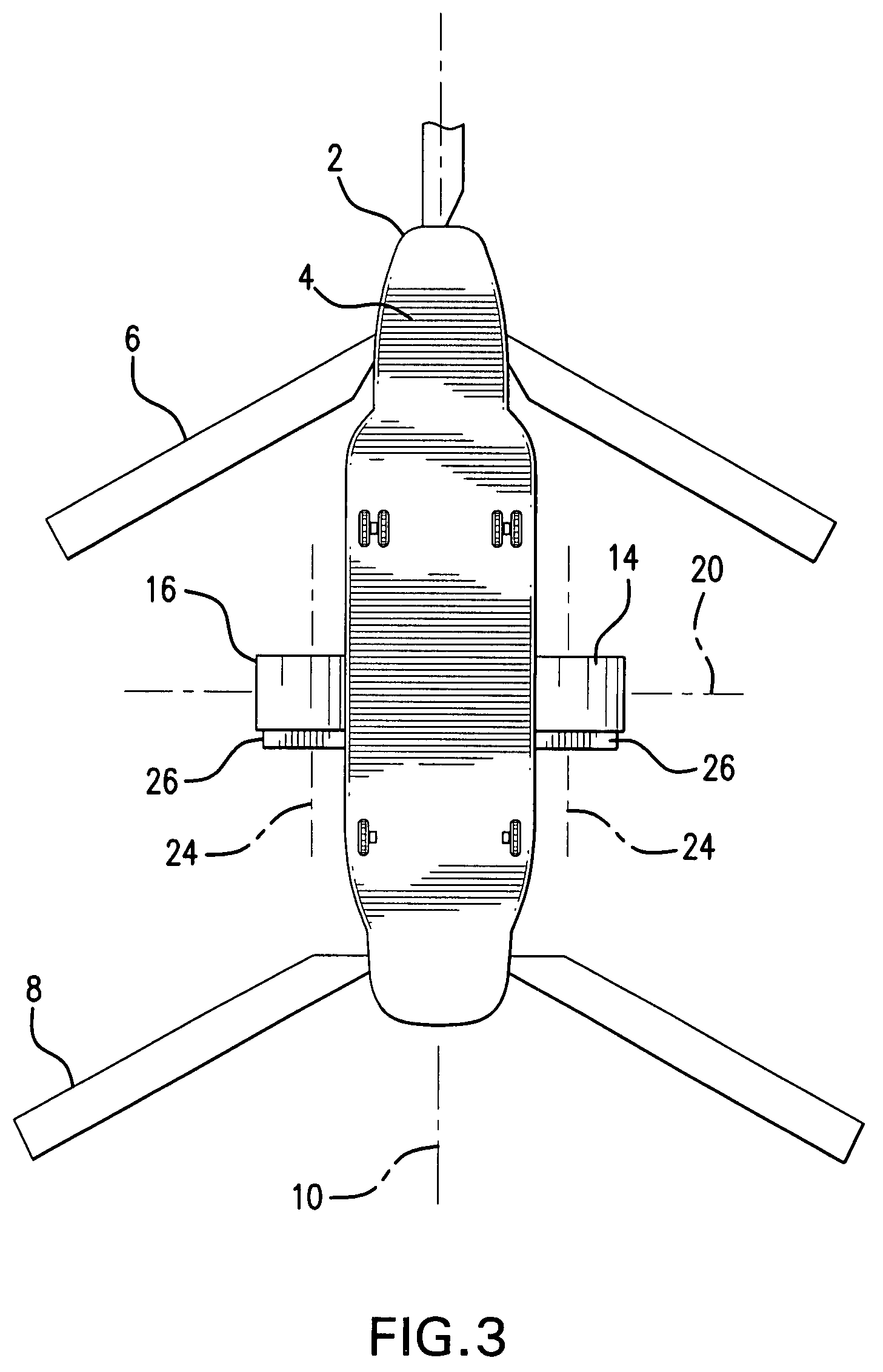Vectored thruster augmented aircraft
a thruster and augmented technology, applied in the field can solve the problems of limited forward limited control options of conventional helicopter pilots, and difficulty in adjusting the speed of rotary wing aircraft, so as to improve the speed, range and fuel economy, and increase the speed of yaw control.
- Summary
- Abstract
- Description
- Claims
- Application Information
AI Technical Summary
Benefits of technology
Problems solved by technology
Method used
Image
Examples
Embodiment Construction
[0050]A tandem-rotor helicopter equipped with the Invention is illustrated by FIGS. 1 through 8 and 13 through 16. As illustrated by FIGS. 1 and 2, a tandem-rotor helicopter 2, such as a Boeing CH-47 Chinook, has a fuselage 4, a fore main rotor 6 and an aft main rotor 8. The helicopter 2 has a longitudinal axis 10 corresponding to a direction of forward travel of the helicopter 2. One or more engines 12 provide power to operate the fore and aft main rotors 6, 8 and the other systems of the helicopter 2.
[0051]The helicopter 2 is equipped with a port vectored thruster 14 and a starboard vectored thruster 16 located on opposing sides of fuselage 4. The vectored thrusters 14, 16 are ducted fans each having a controllable-pitch propeller 18. Vectored thrusters 14, 16 may be selectably tilted about a transverse axis 20 between a first position, illustrated by FIGS. 1-3, and a second position, illustrated by FIGS. 4-6. First and second positions of vectored thrusters 14, 16 differ by a til...
PUM
 Login to View More
Login to View More Abstract
Description
Claims
Application Information
 Login to View More
Login to View More - R&D
- Intellectual Property
- Life Sciences
- Materials
- Tech Scout
- Unparalleled Data Quality
- Higher Quality Content
- 60% Fewer Hallucinations
Browse by: Latest US Patents, China's latest patents, Technical Efficacy Thesaurus, Application Domain, Technology Topic, Popular Technical Reports.
© 2025 PatSnap. All rights reserved.Legal|Privacy policy|Modern Slavery Act Transparency Statement|Sitemap|About US| Contact US: help@patsnap.com



